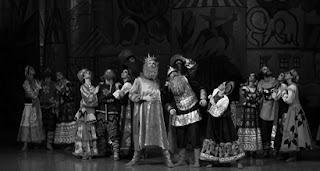So!Art presents you a fascinating exhibition “War and Peace viewed by Russian artists”
dedicated to the Leo Tolstoy’s famous novel.
It’s organized by the Leo Tolstoy State Museum in Moscow. The exhibition was
already exposed in Paris, Reims and Saint-Dizier. Now it opens its doors in
another French city of Le Mans. Then, it will continue its voyage through
France and will be shown here till 2015.
The exhibition consists of several panels on
the themes of "Leo Tolstoy and his
family", "Leo Tolstoy and his protagonists," "War and
Peace" and the illustrations made for the novel, from the first ones made
by Bachylov up to those of Nikolaev, which are the best known. More than that, a
program includes all the illustrations ofthe novel made in Russia, the story of
the Tolstoy family, his conception of the novel, the protagonists and their real
portraits. And, of course, the exhibition touches on the history of the Russian
campaign and the French campaign.
The exhibition contains a great number of
manuscripts in French because of the particular love of the author for this
language.
In general, the exhibition covers the plot of
the novel, the author’s biography and the events of the 1810s.
If you did not read the Tolstoy's novel, it is
an opportunity to become familiar with it and to discover your interest to read
it.
The exhibition is accompanied by the show of
films of Tolstoy and the film extracts linked to the battle of Borodino, music
concerts and animation for children. After Le Mans, the exhibition will be
shown in Strasbourg, Nice, Cambrai and other
French cities.





































